Audi 2012 Annual Report Download - page 221
Download and view the complete annual report
Please find page 221 of the 2012 Audi annual report below. You can navigate through the pages in the report by either clicking on the pages listed below, or by using the keyword search tool below to find specific information within the annual report.-
 1
1 -
 2
2 -
 3
3 -
 4
4 -
 5
5 -
 6
6 -
 7
7 -
 8
8 -
 9
9 -
 10
10 -
 11
11 -
 12
12 -
 13
13 -
 14
14 -
 15
15 -
 16
16 -
 17
17 -
 18
18 -
 19
19 -
 20
20 -
 21
21 -
 22
22 -
 23
23 -
 24
24 -
 25
25 -
 26
26 -
 27
27 -
 28
28 -
 29
29 -
 30
30 -
 31
31 -
 32
32 -
 33
33 -
 34
34 -
 35
35 -
 36
36 -
 37
37 -
 38
38 -
 39
39 -
 40
40 -
 41
41 -
 42
42 -
 43
43 -
 44
44 -
 45
45 -
 46
46 -
 47
47 -
 48
48 -
 49
49 -
 50
50 -
 51
51 -
 52
52 -
 53
53 -
 54
54 -
 55
55 -
 56
56 -
 57
57 -
 58
58 -
 59
59 -
 60
60 -
 61
61 -
 62
62 -
 63
63 -
 64
64 -
 65
65 -
 66
66 -
 67
67 -
 68
68 -
 69
69 -
 70
70 -
 71
71 -
 72
72 -
 73
73 -
 74
74 -
 75
75 -
 76
76 -
 77
77 -
 78
78 -
 79
79 -
 80
80 -
 81
81 -
 82
82 -
 83
83 -
 84
84 -
 85
85 -
 86
86 -
 87
87 -
 88
88 -
 89
89 -
 90
90 -
 91
91 -
 92
92 -
 93
93 -
 94
94 -
 95
95 -
 96
96 -
 97
97 -
 98
98 -
 99
99 -
 100
100 -
 101
101 -
 102
102 -
 103
103 -
 104
104 -
 105
105 -
 106
106 -
 107
107 -
 108
108 -
 109
109 -
 110
110 -
 111
111 -
 112
112 -
 113
113 -
 114
114 -
 115
115 -
 116
116 -
 117
117 -
 118
118 -
 119
119 -
 120
120 -
 121
121 -
 122
122 -
 123
123 -
 124
124 -
 125
125 -
 126
126 -
 127
127 -
 128
128 -
 129
129 -
 130
130 -
 131
131 -
 132
132 -
 133
133 -
 134
134 -
 135
135 -
 136
136 -
 137
137 -
 138
138 -
 139
139 -
 140
140 -
 141
141 -
 142
142 -
 143
143 -
 144
144 -
 145
145 -
 146
146 -
 147
147 -
 148
148 -
 149
149 -
 150
150 -
 151
151 -
 152
152 -
 153
153 -
 154
154 -
 155
155 -
 156
156 -
 157
157 -
 158
158 -
 159
159 -
 160
160 -
 161
161 -
 162
162 -
 163
163 -
 164
164 -
 165
165 -
 166
166 -
 167
167 -
 168
168 -
 169
169 -
 170
170 -
 171
171 -
 172
172 -
 173
173 -
 174
174 -
 175
175 -
 176
176 -
 177
177 -
 178
178 -
 179
179 -
 180
180 -
 181
181 -
 182
182 -
 183
183 -
 184
184 -
 185
185 -
 186
186 -
 187
187 -
 188
188 -
 189
189 -
 190
190 -
 191
191 -
 192
192 -
 193
193 -
 194
194 -
 195
195 -
 196
196 -
 197
197 -
 198
198 -
 199
199 -
 200
200 -
 201
201 -
 202
202 -
 203
203 -
 204
204 -
 205
205 -
 206
206 -
 207
207 -
 208
208 -
 209
209 -
 210
210 -
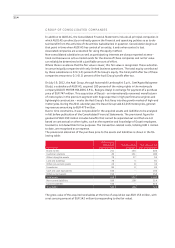 211
211 -
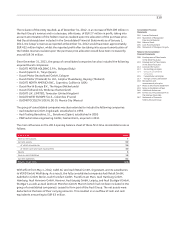 212
212 -
 213
213 -
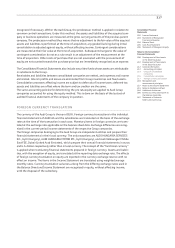 214
214 -
 215
215 -
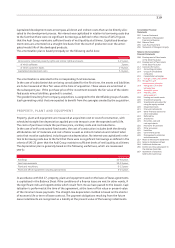 216
216 -
 217
217 -
 218
218 -
 219
219 -
 220
220 -
 221
221 -
 222
222 -
 223
223 -
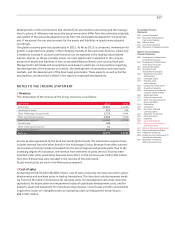 224
224 -
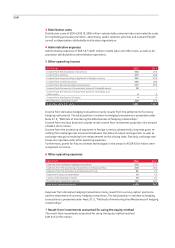 225
225 -
 226
226 -
 227
227 -
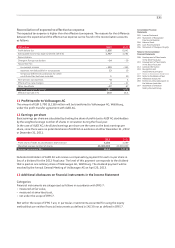 228
228 -
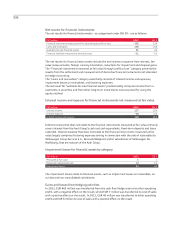 229
229 -
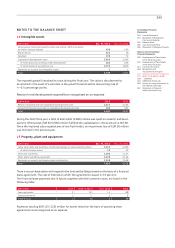 230
230 -
 231
231 -
 232
232 -
 233
233 -
 234
234 -
 235
235 -
 236
236 -
 237
237 -
 238
238 -
 239
239 -
 240
240 -
 241
241 -
 242
242 -
 243
243 -
 244
244 -
 245
245 -
 246
246 -
 247
247 -
 248
248 -
 249
249 -
 250
250 -
 251
251 -
 252
252 -
 253
253 -
 254
254 -
 255
255 -
 256
256 -
 257
257 -
 258
258 -
 259
259 -
 260
260 -
 261
261 -
 262
262 -
 263
263 -
 264
264 -
 265
265 -
 266
266 -
 267
267 -
 268
268 -
 269
269 -
 270
270 -
 271
271 -
 272
272 -
 273
273 -
 274
274 -
 275
275 -
 276
276 -
 277
277 -
 278
278 -
 279
279 -
 280
280 -
 281
281 -
 282
282 -
 283
283 -
 284
284 -
 285
285
 |
 |

224
OTHER FINANCIAL ASSETS AND OTHER RECEIVABLES
Financial assets (except for derivatives) and other receivables are recognized at amortized cost.
Provision is made for discernible non-recurring risks and general credit risks in the form of corre-
sponding value adjustments.
DEFERRED TAX
Pursuant to IAS 12, deferred tax is determined according to the liability method. This method
specifies that tax deferrals are to be created for all temporary differences between the tax base
of assets and liabilities and their carrying amounts in the Consolidated Balance Sheet (tempo-
rary concept). Deferred tax assets relating to carryforward of unused tax losses must also be
recognized.
Deferrals amounting to the anticipated tax burden or tax relief in subsequent fiscal years are
created on the basis of the anticipated tax rate at the time of realization. In accordance with
IAS 12, the tax consequences of distributions of profit are not recognized until the resolution
on the appropriation of profits is adopted.
Deferred tax assets include future tax relief resulting from temporary differences between the
carrying amounts in the Consolidated Balance Sheet and the valuations in the Balance Sheet for
tax purposes. Deferred tax assets relating to carryforward of unused tax losses that can be real-
ized in the future and deferred tax assets from tax relief are also recognized.
Deferred tax assets and deferred tax liabilities are netted if the tax creditors and maturities are
identical.
Pursuant to IAS 1, deferred tax is reported as non-current.
The carrying amount is reduced for deferred tax assets that are unlikely to be realized.
INVENTORIES
Raw materials and supplies are measured at the lower of average cost of acquisition or net real-
izable value. Other costs of purchase and purchase cost reductions are taken into account as
appropriate.
Work in progress and finished goods are valued at the lower of cost of conversion or net real-
izable value. Cost of conversion includes direct materials and direct productive wages, as well as
a directly attributable portion of the necessary indirect materials and indirect labor costs, sched-
uled production-related depreciation, and expenses attributable to the products from the sched-
uled amortization of capitalized production development costs. Distribution costs, admini-
strative expenses and interest on borrowings are not capitalized.
Merchandise is valued at the lower of cost of purchase or net realizable value.
Provision is made for all discernible storage and inventory risks in the form of appropriate reduc-
tions in the carrying amounts. Individual adjustments are made on all inventories as soon as the
probable proceeds realizable from their sale or use are lower than the carrying amounts of the
inventories. The net realizable value is deemed to be the estimated proceeds of sale less the
estimated costs incurred up until the sale.
Current leased assets comprise leased vehicles with an operating lease of up to one year and
vehicles which are subject to a buy-back obligation within one year (owing to buy-back agree-
ments). These vehicles are capitalized at cost of sales and valued in accordance with the ex-
pected loss of value and likely useful life. Based on local factors and historical values from used
car marketing, updated internal and external information is incorporated into the measurement
on an ongoing basis.
